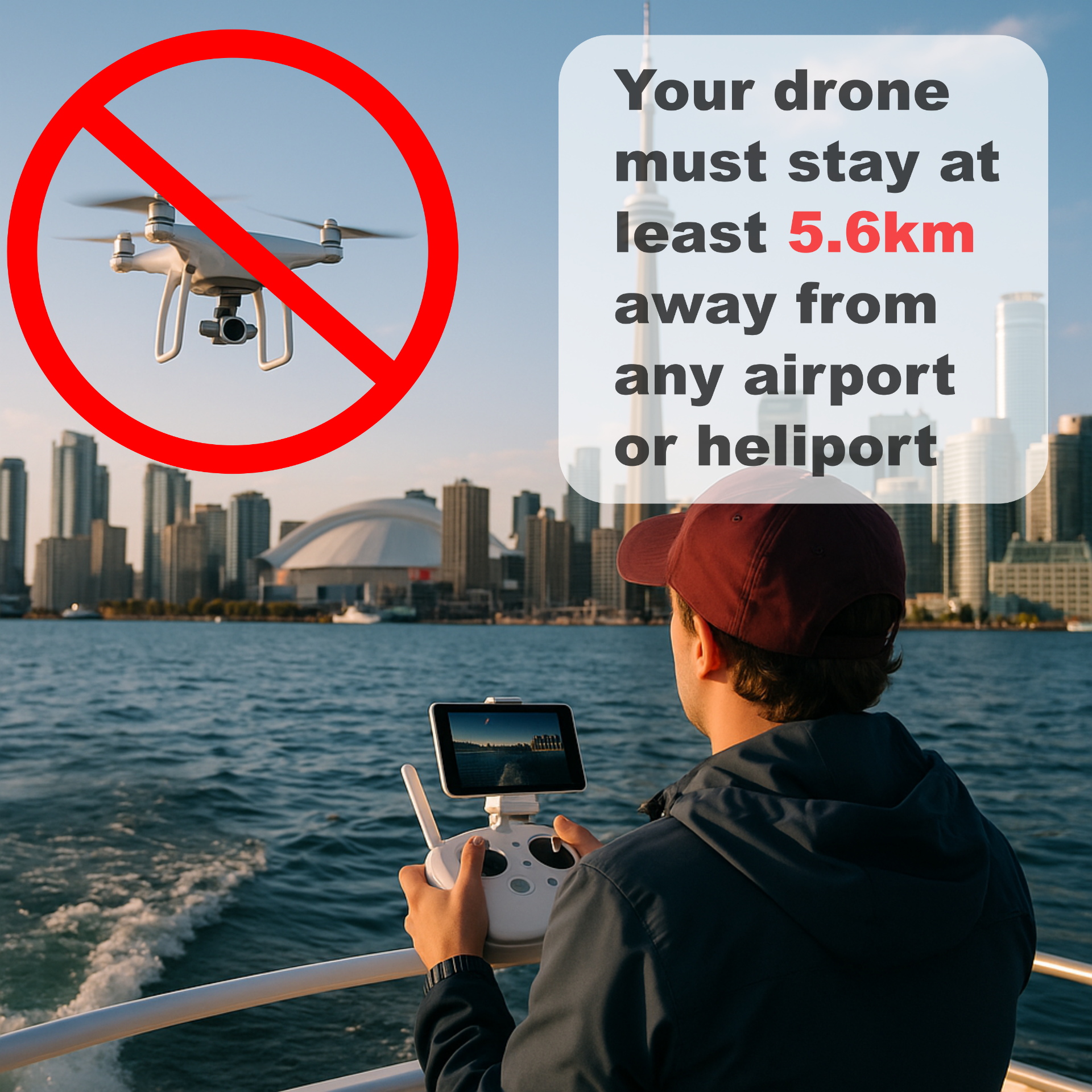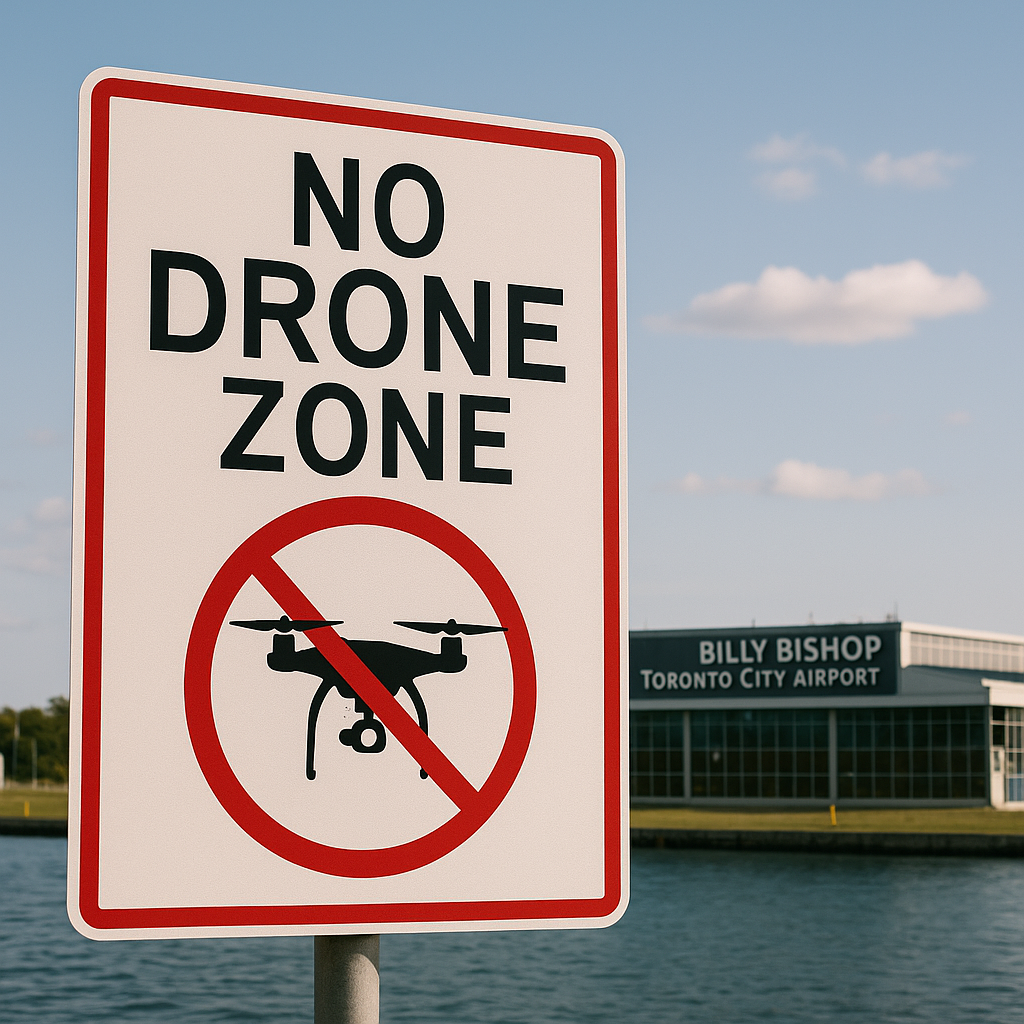Boating with Drones in and around Toronto Harbour: Know the Rules Before You Launch

Toronto's waterfront is a spectacular place to explore by boat—and it's just as tempting to capture the view from above with a drone. Whether you're documenting a weekend cruise, filming your sailboat from the air, or scouting ahead along the shoreline, flying a drone while boating can be both useful and inspiring.
But what many boaters don't realize is that Toronto Harbour sits right beside restricted airspace, largely due to Billy Bishop Toronto City Airport. Even if you're miles offshore, your drone could unintentionally enter controlled zones—leading to potential fines or flight disruptions.
⚠️ The Overlooked Risk: Billy Bishop Airport

Billy Bishop Airport, located on the Toronto Islands, has commercial airline traffic and a floatplane base. That means the airspace above and around it is heavily regulated. When you're boating in Toronto Harbour—or even just off the coast—you may be well within restricted drone zones without realizing it.
-
Controlled airspace extends several kilometres in all directions, including over water.
-
Floatplanes often use the inner harbour and adjacent areas for takeoff and landing, which adds another layer of flight restrictions.
Even if you're on a boat in what feels like open water, your drone may be entering a no-fly zone without warning.
🚁 What Your Drone Might Already Know
The good news? Most popular drone brands, like DJI, Autel, and Skydio, include built-in geofencing. These systems are designed to:
-
Prevent takeoff or entry into restricted areas.
-
Display warnings if you're near controlled airspace.
-
In some cases, physically stop the drone from entering the zone—even if you try to override it.
However, you can't rely solely on your drone's software. Geofencing databases may be outdated, and responsibility still lies with the pilot—even if you're on a moving vessel.
🧭 Tips for Boaters Flying Drones Near Toronto
Here are some practical ways to fly safely and legally from your boat:
-
Check the airspace before launch
-
Use apps like NAV Drone, Drone Pilot Canada, or the NRC Site Selection Tool to confirm where you're allowed to fly.
-
Always assume Toronto's inner harbour is restricted unless confirmed otherwise.
-
-
Know your drone category
-
Drones under 250 grams are exempt from many regulations, but still must avoid aircraft and restricted zones.
-
Drones between 250 g and 25 kg require certification and must stay at least 5.6 km from airports unless you have an Advanced Operations certificate.
-
-
Stay below 122 m (400 ft)
That's the legal ceiling for drone flight—never exceed it, even offshore. -
Respect floatplanes and helicopter routes
Water runways are active in and around the harbour. If you see or hear floatplanes, bring the drone down immediately. -
Don't launch from restricted land areas
While you're on a boat, you may be fine to take off—but launching from Toronto Island, City parks, or docks may require special permission.
📞 Who to Contact
For detailed and up-to-date information on where you can fly:
-
Use the NAV Drone app for flight authorizations
-
Contact NAV CANADA for airspace details or permission requests
🚤 Final Word: Fly Smart, Stay Safe
Boating and flying drones go hand-in-hand for modern explorers—but Toronto Harbour is no place for guesswork. With busy skies, active airspace, and legal consequences, it's essential to check your surroundings before takeoff.
Respect the rules, plan your flight, and let your drone enhance your boating—not ground it.
